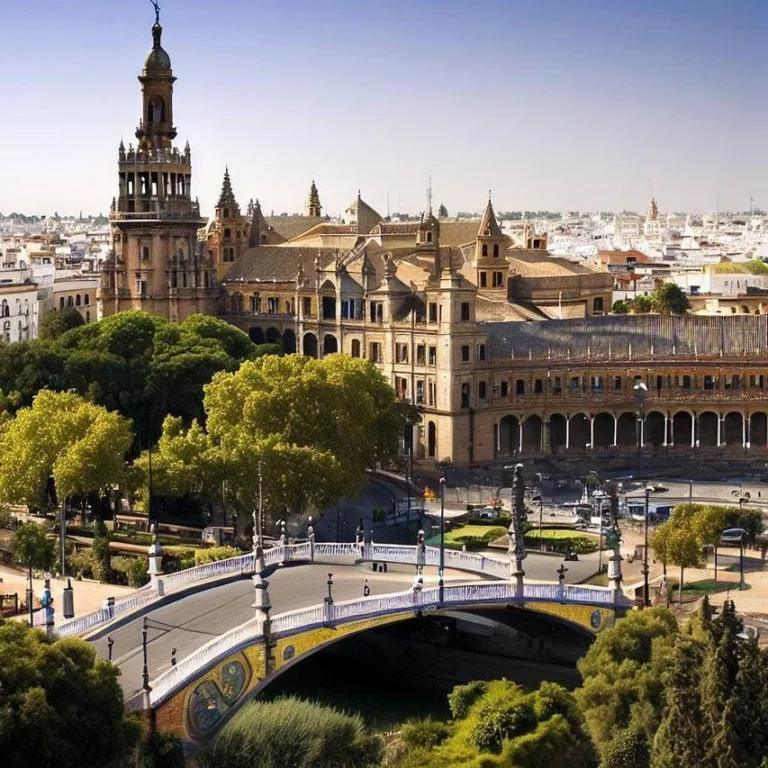Welcome to our comprehensive guide to Sevilla, a city that effortlessly blends history, culture, and modernity. Nestled in the heart of southern Spain, Sevilla boasts a rich tapestry of architectural wonders, vibrant festivals, and a lifestyle that captures the essence of Spanish tradition. Let’s embark on a journey through the enchanting streets of Sevilla and discover why it stands as a true gem of the Iberian Peninsula.
The history and heritage
Sevilla’s history is a captivating tale of diverse influences that have shaped its character over the centuries. From its foundation by the Romans to its prominence as a major Islamic center during the medieval period, the city’s architecture and culture bear the marks of this multifaceted past. The iconic Alcázar of Sevilla , a stunning palace originally built by the Moors, stands as a testament to this blend of architectural styles.
The Seville Cathedral , a UNESCO World Heritage site, is an awe-inspiring marvel that fuses Gothic and Renaissance styles. Its renowned Giralda Tower was originally a minaret during the Islamic era and now offers panoramic views of the city.
Culture and traditions
Sevilla is synonymous with the Feria de Abril , an annual festival that brings the city to life with flamenco music, traditional dress, and vibrant parades. This celebration provides a window into Andalusian culture, where locals and visitors come together to revel in the spirit of the region. The haunting melodies of flamenco, the soulful dance that echoes through the streets, are a reflection of Sevilla’s passionate soul.
The city’s historic neighborhoods, such as Santa Cruz and Triana , exude charm and character. Cobblestone streets wind through whitewashed buildings adorned with colorful tiles, while hidden plazas invite you to savor local cuisine and soak in the atmosphere.
Modern delights
Beyond its historical treasures, Sevilla embraces modernity with open arms. The Metropol Parasol , affectionately known as the „mushrooms,“ is a contemporary architectural wonder that offers a stark contrast to the city’s ancient landmarks. This wooden structure houses an archaeological museum, a farmers‘ market, and an observation deck with panoramic views.
Sevilla’s culinary scene is a delightful fusion of traditional flavors and innovative concepts. Tapas bars and restaurants serve up a symphony of taste, allowing you to indulge in local specialties like gazpacho, Iberian ham, and fresh seafood.
Faqs about sevilla
1. What is the best time to visit Sevilla?
Spring (March to May) and fall (September to November) are the ideal seasons to explore Sevilla. The weather is pleasant, and you can experience festivals like the Feria de Abril.
2. How can I get around the city?
Sevilla has an excellent public transportation system, including buses and trams. Biking and walking are also popular ways to explore the city’s charming streets.
3. What are some must-see attractions?
Don’t miss the Alcázar, Seville Cathedral, Plaza de España, and the Triana neighborhood. These landmarks capture the essence of Sevilla’s history and beauty.
4. Is knowledge of Spanish necessary?
While many locals speak English, having a basic understanding of Spanish can enhance your experience and interactions in the city.
5. Are there any day trips from Sevilla?
Absolutely! Consider taking a day trip to the enchanting city of Cordoba or the coastal beauty of Cádiz. Both are easily accessible by train or bus.
As you plan your journey to Sevilla, anticipate immersing yourself in a world where tradition and modernity harmoniously coexist. From the resplendent architecture to the passionate rhythms of flamenco, Sevilla beckons you to experience its allure firsthand.
Viz také:






